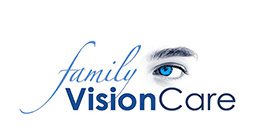 The benefits of outdoor play are well known. It allows children to exercise, socialize, develop skills like problem-solving and risk-taking and lets them soak up some Vitamin D.
The benefits of outdoor play are well known. It allows children to exercise, socialize, develop skills like problem-solving and risk-taking and lets them soak up some Vitamin D.
A less-known benefit of outdoor play is its effect on myopia (nearsightedness). Numerous studies have confirmed an association between increased “sun time” and lower levels of myopia.
Below, we’ll explore why this is the case, and recommend ways to keep your child’s eyes healthy, whether or not they are nearsighted.
Why “Sun Time” Helps Control Myopia
While researchers haven’t yet pinpointed the exact reason, some believe that the sun’s intense brightness plays a role. Others think Vitamin D may also be a factor. Another theory is that the time children spend looking into the distance while being outdoors — in contrast to time spent on a computer indoors — helps keep myopia at bay.
The cause of myopia is an elongated eye, which forces incoming light rays in front of the retina, instead of on the retina.
How Much Outdoor Time Is Recommended?
There isn’t a unanimous opinion on an exact amount of time, but the general recommendation is that children ages 6 and up should spend 2 or more hours outdoors per day.
It’s important to note that UV rays can be harmful to the eyes and skin. So, before you send your little ones out to play, be sure to give them a pair of UV-blocking [sunglasses], a wide-brimmed hat and sunblock.
What Can Parents Do For Their Children’s Vision and Eye Health?
Encourage your children to spend time outdoors whenever possible. It is also important to follow local health guidelines pertaining to the exposure of children to sunlight. Limit their daily screen time, and offer minimal screen time to children under the age of 2.
Make sure your child takes frequent breaks whenever doing near work like homework, reading and spending time on a digital screen. A 5-10 minute break should be encouraged for every hour of near work.
The best thing you can do for your myopic child is to provide them with myopia management treatments. Even if your child doesn’t have myopia but is at risk, have their eyes checked annually, or as often as your optometrist recommends.
To schedule your child’s myopia consultation, call Family Vision Care in Mt Pleasant today!
Q&A
Q: #1: Why is it important to slow down myopia?
- A: Childhood myopia is a significant risk factor for developing sight-threatening eye diseases later in life. These serious eye conditions include glaucoma, cataracts, retinal detachment and age-related macular degeneration.
Q: #2: What are myopia management treatments?
- A: The 3 main myopia treatments are atropine eye drops, orthokeratology (ortho-k) contact lenses and multifocal contact lenses. Speak with your optometrist about which option is best for your child’s eyes and lifestyle.
{
"@context": "https://schema.org",
"@type": "FAQPage",
"mainEntity": [{
"@type": "Question",
"name": "#1: Why is it important to slow down myopia?",
"acceptedAnswer": {
"@type": "Answer",
"text": "Childhood myopia is a significant risk factor for developing sight-threatening eye diseases later in life. These serious eye conditions include glaucoma, cataracts, retinal detachment and age-related macular degeneration."
}
},{
"@type": "Question",
"name": "#2: What are myopia management treatments?",
"acceptedAnswer": {
"@type": "Answer",
"text": "The 3 main myopia treatments are atropine eye drops, orthokeratology (ortho-k) contact lenses, and multifocal contact lenses. Speak with your optometrist about which option is best for your child’s eyes and lifestyle."
}
}
]
}
